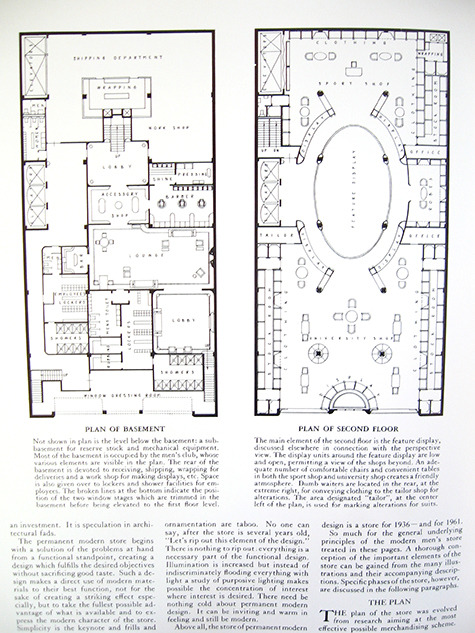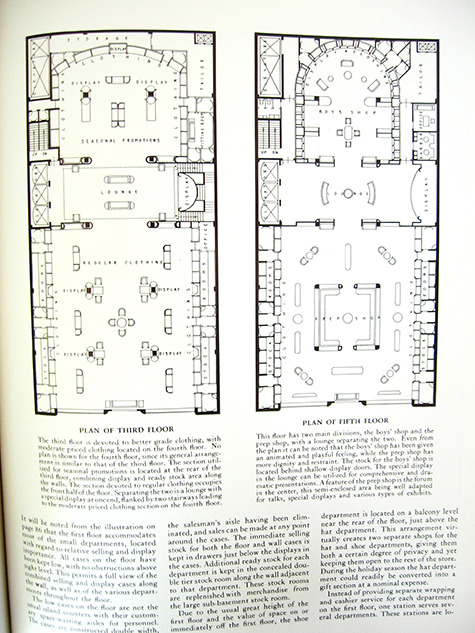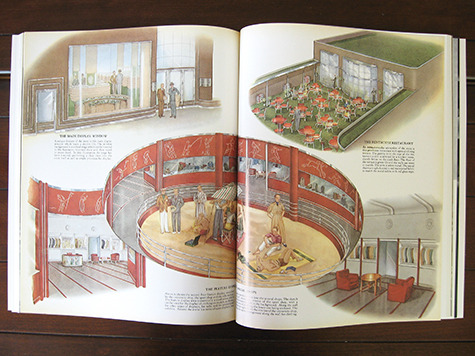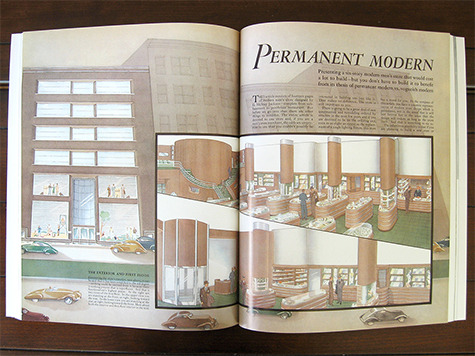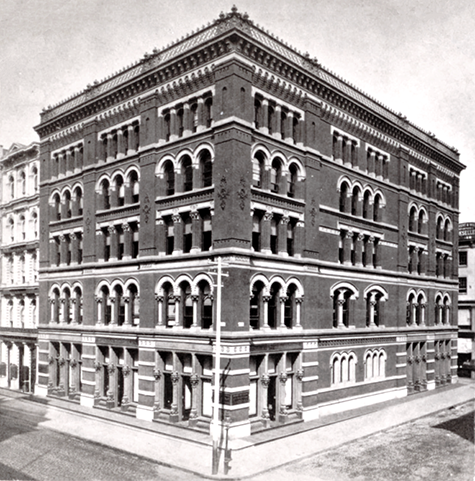
What would be the ideal menswear store? The editors of Apparel Arts thought they knew. In 1936, they published “Permanent Modern,” a fourteen-page article introducing their vision of modern menswear retailing.
The article spares little in details. Included are elaborate floor plans and descriptions of the materials that should be used for the architecture, fixtures, and display cases. According to the editors, things should look modern, but not “voguish modern,” as you want to catch the customer’s eye, yet also make the place feel inviting. They even specified the lighting and air conditioning systems (two whole pages were dedicated to that). Should the reader want to implement their vision, they included a directory for the contractors, suppliers, and equipment manufacturers who could help with the store’s construction.
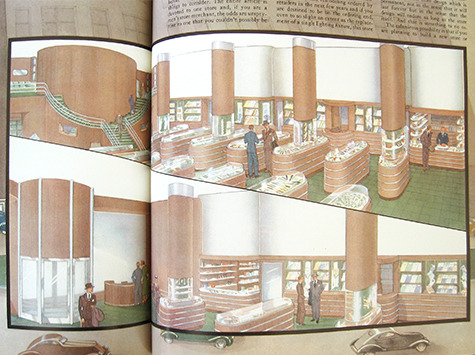
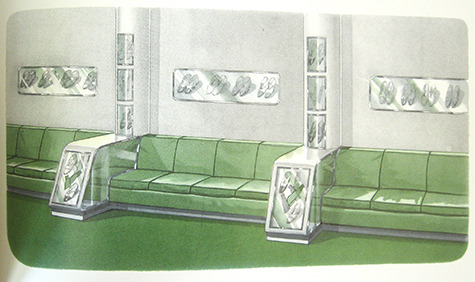

The store they imagined was grand – something like a Saks Fifth Avenue, but solely dedicated to men. On the first floor, you have accessories and footwear. Low, countertop cases are used to display ties, pocket squares, and gloves. The departments for hats and shoes are sectioned off from the main accessories floor, so as to provide customers with a certain level of privacy. Replacing the old-fashioned theatre-chair seating arrangements in the footwear department is a group of modern, upholstered wall seats. And in the hat department, the display cases are designed so that they can be easily used to promote gifts during the holiday season.
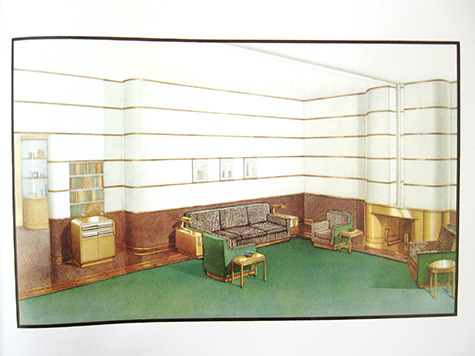
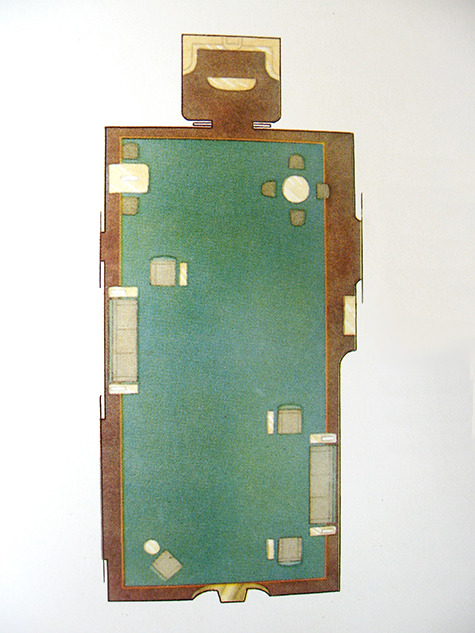
Below is the basement, which is partly dedicated to shipping and receiving, as well as holding inventory and equipment. There’s also a large club lounge, which takes up most of the floor. Here, fruitwood furniture and brown/ white upholstered sofas decorate the main space. A bar sits at one end of the room, while a copper mantel fireplace is located at the other. Green carpet runs throughout.
The club is meant to be a space where customers can come in, relax, and have a drink, but they can also enjoy the valet service, barber shop, and provisions for massage, showers, and lockers. The basement has its own exits, which lead out to the sidewalks just beyond the front of the store, so that men can stay after-hours, even when the store itself is closed.

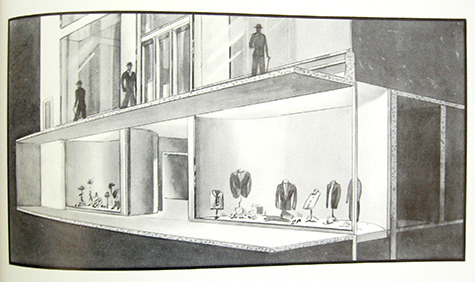
In a strange (and seemingly needless) plan, the editors also imagined that the first floor’s display windows could be mechanically lowered to the basement, where employees would do their trimming before raising them back up again. Why workers couldn’t just bring their materials up to the displays, I have no idea.

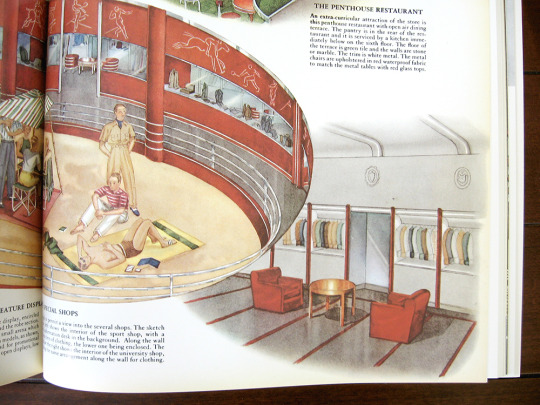
The second floor is devoted to sport and university clothing, with separate sections for each. There’s also a small area for robes and dressing gowns. In the above two images, you can see the imagined interiors of the sport and university shops. Along the wall are two tiers of clothing, with the lower one being enclosed.
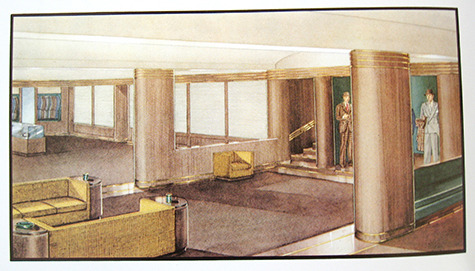
The third floor is dedicated to high-end tailoring, with moderate priced clothing occupying the fourth. The back of these floors have sections for seasonal promotions and in-house alterations services. The front half is where the rest of the clothing is displayed, with a small lounge area separating the two. Lounges, I imagine, are necessary since we have four massive floors dedicated to men’s style at this point.
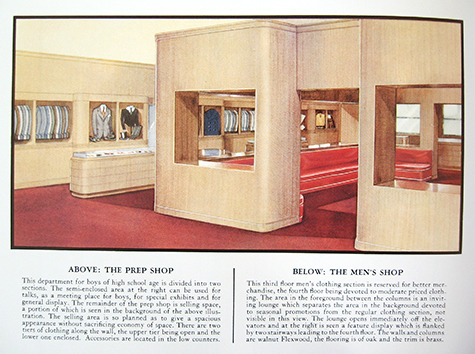
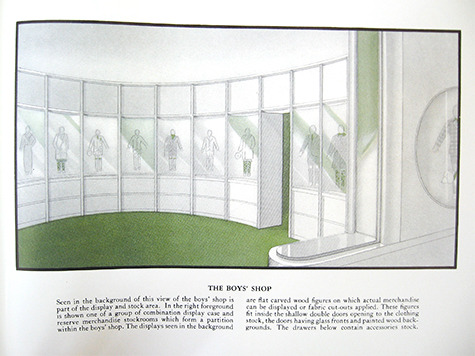
The fifth floor has two main divisions – the boys’ shop and the prep shop, with a lounge (again) separating the two. The boys shop has an animated and playful feeling, while the prep shop shows more dignity and restraint. The prep shop, as you can see, is mainly dedicated to tailored clothing, which – for boys of high-school age – has almost all but disappeared.
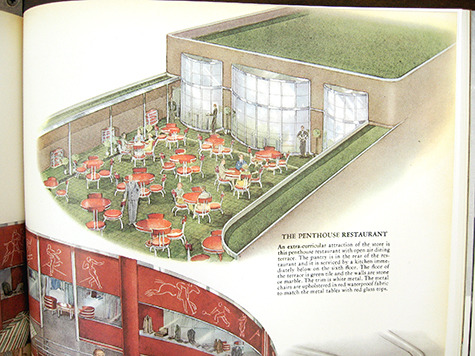
Finally, since trekking through five floors (six, if you came from the basement’s club lounge) must be tiring, the top-most floor has a penthouse restaurant with an open air dining terrace. Apparel Arts’ editors imagined that the terrace could be converted into a skating rink in the wintertime, for showing apparel on live models.
“Permanent Modern” was supposed to be an enduring concept of modern menswear retailing, but such massive commercial complexes feel so archaic now. For many men, including myself, places such as Saks Fifth Avenue and Neiman Marcus feel too impersonal, which is why many have gone to smaller and more specialized boutiques.
The best menswear store I’ve seen is Battistoni. Rather than modern, it feels old-school – the wood-paneled walls, marble floors, and fine art lend a sort of a rarified air, and the shop consists of just a single floor (not six) with small, separate rooms dedicated to different goods. Supposedly, the place used to be something of a salon, where men would drink and trade gossip while they got measured. The owner of Battistoni once told me Humphrey Bogart came so often that he asked if he could leave a bottle of whiskey for himself here, but who knows if that’s just lore.
In any case, I guess tailored clothing can be timeless, but taste in retail changes.
